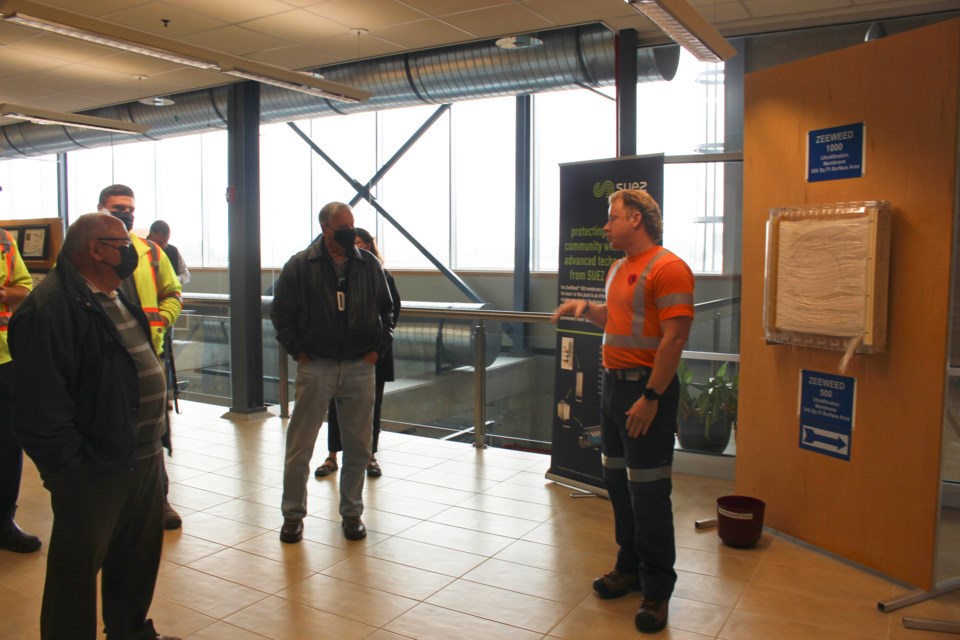School was in session at the city’s Surface Water Treatment Plant on Wednesday.
Approximately 40 people attended an open house, which included a tour of the 18,000-square-foot facility, located at 20 Royal Parkside Dr. in the city’s southeast end.
David Walker, senior water operator with the city, led the tour, which will be hosted monthly as a way to create an awareness of municipal services and how water is supplied.
“Unfortunately, a lot of people in the community don’t know how their water is treated or distributed through the system, so we figure by opening up the (facility) and doing tours once per month, we can engage the public more with awareness about water, how (it works) and things that can benefit them, like water loss,” he said following the tour.
“A leaky toilet is part of our customer service department, which can save lots of money as well. It’s just (providing) general information to the public to further their knowledge of water.”
Walker acknowledged he was surprised with the turnout, which included several families who attended as part of a homeschool outing.
“Throughout the years, we have seen a lot of homeschools or private schools come here. I think it’s a brilliant thing. They’re kind of touching back to the basics,” said Walker.
"What they teach now is important, but to know a little bit about your infrastructure and water is important as well. My nine-year-old niece and I talked about it for an hour because it’s something that’s coming up in her class as well,” he said. “You learn about the hydrological cycle, but you don’t learn (how) it gets to my tap.”
The city has access to two sources of drinking water: groundwater from a deep aquifer and surface water from Kempenfelt Bay, both of which are treated at one of the city’s facilities prior to making it to the consumer.
The plant, Walker explained to those in attendance, opened more than 10 years ago.
“There are conventional plants and there are new, updated membrane plants,” he explained. “Conventional plants are the old plants where they used sediment layers … to build what’s called a filter bed and they’d pour water through that filter bed, and that’s how they’d treat water. That is kind of an old-school technology. It still works fine … but it’s not very efficient and you lose a lot of water trying to treat it.”
The newer plant, like the one in the city’s south end, he continued, uses a membrane he described as being similar to a rope covered in a polymer that helps remove particles from water.
The membranes typically have a lifespan of 10 years, Walker noted, but he said the plant will continue to use the existing ones for a few more years as they still meet all standards that are required.
“They are in such good shape because of our source water that we can continue to use them until they get to a detrimental place,” he said, noting the plant, which was built in 2010, is one of the most modern filtration plants around.
“The city took a forefront with technology and really spearheaded it. Even at this location, we do a lot of remote work, tablet work … Technology-wise, the city is staying very current.”
Axel Dittmann and his four children, ranging from six to 12 years old, attended the open house as an educational field trip.
“We wanted to see how our water is processed, where it comes from and what is done to it,” he said. “It’s bigger than expected, and I was surprised to hear we have two different plants. I am surprised that there’s lots of capacity built in for expansion, which is great.”
Natalie Campbell said she and her children recently completed a lesson on water preservation and how it’s cleaned.
“It’s just a great opportunity for them to now see the people working here and how it actually is in real life.”



